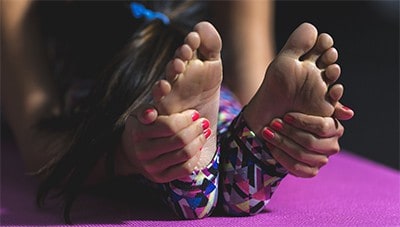Muscle Cramps
A sharp twinge
It can be a sharp twinge or sudden, excruciating pain that stops you in your tracks. It’s a muscle cramp, an involuntary contraction of one or more muscles. Though generally harmless, cramps can make it temporarily impossible to use the affected muscle. Cramps can affect any of the body’s skeletal muscles, those muscles that are under your voluntary control. Cramps can involve part or all of a muscle, or several muscles in a group, particularly those muscles in your lower leg or thigh. Although they usually disappear on their own and are rarely serious enough to require medical care, you should see a physician if your cramps cause severe discomfort, occur frequently, don’t improve with self-care or aren’t associated with any obvious cause, such as strenuous exercise. And be sure to bring a list of your key medical information, including any allergies or medical conditions, and the names of all the medications and supplements you’re currently taking.
Can happen anywhere
A muscle cramp can occur while you play tennis or golf, bowl, swim, or do any exercise. It can also happen while you sit, walk, or even just sleep. Sometimes the slightest movement that shortens a muscle can trigger a cramp. Some people are predisposed to muscle cramps and get them regularly with any physical exertion. Muscle cramps are very common among endurance athletes and older people who perform strenuous physical activities. Athletes are more likely to get cramps in the preseason when the body is not conditioned and therefore more subject to fatigue. Cramps often develop near the end of intense or prolonged exercise. Older people are more susceptible to muscle cramps due to normal muscle loss that begins in the mid-40s and accelerates with inactivity. As you age, your muscles cannot work as hard as they used to. The body also loses some of its sense of thirst and its ability to sense and respond to changes in temperature.
Narrowing of arteries
Overuse of a muscle, dehydration, muscle strain or simply holding a position for a prolonged period of time may result in a muscle cramp. Although most muscle cramps are harmless, some may be related to an underlying medical condition, such as inadequate blood supply. Narrowing of the arteries that deliver blood to your legs can produce cramp-like pain in your legs and feet while you’re exercising. These cramps usually go away soon after you stop exercising. Compression of nerves in your spine can also produce cramp-like pain in your legs. The pain usually worsens the longer you walk. Walking in a slightly flexed position, such as when pushing a shopping cart ahead of you, may improve your symptoms. Too little potassium, calcium or magnesium in your diet can contribute to leg cramps. Some diuretic medications prescribed for high blood pressure cause loss of potassium. Muscle cramps are also part of certain conditions such as diabetes and anemia.
Painful nuisance
Leg cramps that occur at night are commonly called “charlie horses.” In most cases, night leg cramps involve your calf muscles, but muscles in your feet or thighs may cramp as well. The risk of having night leg cramps increases with age. Pregnant women also have a higher likelihood of experiencing this form of cramps. Certain medications, including diuretics and oral contraceptives, are associated with night leg cramps. To avoid dealing with this painful nuisance, drink plenty of fluids to avoid dehydration and wear shoes that have proper support. Stretching your leg muscles, or riding a stationary bike, for a few minutes before you go to bed will also help. And it’s a good idea to untuck the bed covers at the foot of your bed. Restless leg syndrome is sometimes confused with night leg cramps, but it’s a separate condition and pain is not a prominent feature. Still, restless leg syndrome is a possibility to consider if you are having cramps at night.
Avoid the activity
It’s an old joke. A patient walks into a doctor’s office and says, “Doc, it hurts when I do this.” The doctor replies, “So stop doing that.” Actually, that is the best way to treat muscle cramps, simply by avoiding whatever activity triggered the cramp. If you do get a cramp, gently stretch and massage the cramping muscle, holding it in a stretched position until the cramp stops. For a calf cramp, put your weight on your cramped leg and bend your knee slightly. If you’re unable to stand, try pulling the top of your foot on the affected side toward your head while your leg is in a straightened position. This will also help ease a back thigh or hamstring cramp. For a front thigh cramp, use a chair to steady yourself and try pulling your foot on the affected side toward your buttock. You may find that cold or heat helps relieve muscle cramps. Use a cold pack to relax tense muscles. Use a heating pad later if you have pain or tenderness, or take a hot bath.
Trusted by thousands of listeners every week, T. Glenn Pait, M.D., began offering expert advice as the host of UAMS’ “Here’s to Your Health” program in 1996. Dr. Pait began working at UAMS in 1994 and has been practicing medicine for over 20 years.
